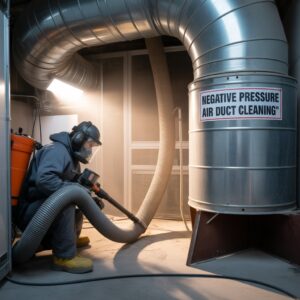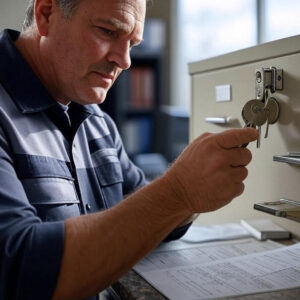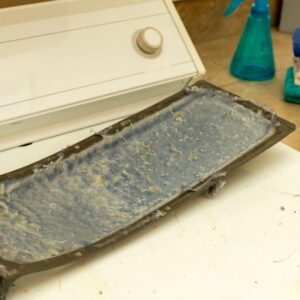Let’s Get One Thing Straight: cGMP Isn’t Just About Rules
You might hear “cGMP” and immediately picture dusty compliance manuals or someone nervously flipping through spreadsheets in a lab coat. But let’s hit pause right there. cGMP—short for Current Good Manufacturing Practice—isn’t just about ticking boxes. It’s about protecting people. It’s about making sure every tablet, bottle, tube, vial, or powder that reaches a consumer’s hands is as safe and effective as it should be.
That’s not exaggeration. One missed step or ignored protocol in a manufacturing facility can lead to contamination, product recalls, or worse—serious health risks. And when your brand’s reputation, your customers’ trust, and sometimes people’s lives are on the line, following cGMP isn’t just smart—it’s non-negotiable.
So, what’s cGMP certification all about? Let’s break it down, not like a lecture, but like a real-world conversation. Because this stuff matters.
The cGMP Basics—But Not Boring
Alright, here’s the meat and potatoes. cGMP standards are enforced by the U.S. FDA and other regulatory bodies globally, and they apply across industries—pharma, biotech, cosmetics, food, dietary supplements. The “current” in cGMP is no filler word. It means companies are expected to stay updated with the latest technologies and practices.
So what does it actually cover?
- Cleanliness and hygiene of the manufacturing environment
- Consistent, documented procedures
- Quality control systems
- Equipment maintenance and calibration
- Staff training and qualifications
Essentially, it’s about creating a system where errors are prevented—not just detected. That’s a big mindset shift, and certification forces companies to own it.
Why Bother With Certification? Isn’t Compliance Enough?
Fair question. After all, many businesses technically follow cGMP guidelines without ever hanging a shiny certificate on the wall. But here’s the thing: certification proves it. It shows inspectors, business partners, and customers that you’re not just claiming safety—you’re demonstrating it.
And it’s not just about credibility. It opens doors. Many international markets won’t even look at your product unless you’re cGMP-certified. Want to work with major contract manufacturers or distributors? They’ll want proof you can walk the talk.
It also improves internal accountability. Once you’re certified, you can’t cut corners—or rather, you won’t want to. You’ve built the systems. Now, everyone from the lab to logistics is rowing in the same direction.
The Certification Process: No Magic Wand, Just Smart Work
Getting cGMP certified isn’t a weekend project. There’s no magic wand. It takes time, effort, and yes—money. But it’s worth it.
The journey typically looks something like this:
- Gap Analysis – Think of it as your reality check. Where are you falling short?
- Documentation Overhaul – Policies, SOPs (Standard Operating Procedures), batch records—everything must be accurate and traceable.
- Training Programs – Everyone from the janitor to the QA manager needs to know their role.
- Facility Upgrades – Sometimes, infrastructure has to catch up to compliance.
- Internal Audits – You catch the hiccups before the auditors do.
- Third-Party Audit – This is where a certified body comes in, evaluates your system, and (hopefully) issues the certificate.
Sounds like a lot? Sure. But training, mentorship, and even off-the-shelf templates can help lighten the load.
A Quick Digression: The Human Side of cGMP
You know what gets overlooked in all this talk about protocols and documents? People. Behind every cleanroom door is a technician checking valves, a supervisor signing off on quality checks, a packaging team labeling boxes.
If your people aren’t bought in, your compliance won’t hold up. That’s why culture matters. A culture that takes pride in doing things right, where folks aren’t afraid to report issues or ask for clarification—that’s the kind of environment where cGMP thrives.
And let’s be real: if employees don’t believe in the system, they’ll find ways to work around it. But if they understand why it matters, they’ll become the system’s strongest defenders.
Let’s Talk Risk—Because It’s Always Lurking
Every manufacturing process comes with risk. Raw materials might be inconsistent. Equipment could fail. A typo on a label could send the wrong dosage instructions out the door. cGMP certification is about identifying those risks and designing systems that catch them early—or better yet, eliminate them.
It’s not fear-based. It’s future-proofing. Risk management through cGMP isn’t about paranoia—it’s about preparedness.
The Regulatory Landscape Isn’t Slowing Down
If you’re in pharmaceuticals or food manufacturing, you already know the rules shift. What’s compliant today might be outdated tomorrow. cGMP certification helps you stay on top of this—because maintaining certification means continuous improvement.
And honestly, regulators aren’t messing around anymore. Global supply chains mean global accountability. What happens in one country can ripple across others. That’s why certification isn’t just a regional checkbox—it’s a global passport to credibility.
Post-Certification: Now What?
So you’ve got your cGMP certificate. Time to relax? Not quite. Certification isn’t a one-and-done thing. There’s ongoing surveillance, periodic audits, re-certifications. And internal audits? They should become part of your business rhythm.
But here’s the upside: once the systems are in place, everything else flows easier. Quality issues drop. Customer complaints go down. Product recalls become rarer. And guess what? Your team actually becomes more confident.
Technology Is Changing the Game
A fun twist here—digital tools are making cGMP easier (and dare we say, cooler?). Electronic batch records, audit trail software, cloud-based quality systems—these aren’t just tech toys. They’re lifelines.
If you’re still managing your production with clipboards and filing cabinets, you’re fighting an uphill battle. Smart companies are embracing digital transformation not for the buzzwords, but because it just makes sense.
The Global Angle—And Why It Matters
cGMP isn’t a U.S.-only concept. There’s PIC/S, WHO-GMP, EU-GMP. If your product crosses borders, you need to know how your certification translates. Luckily, many standards are harmonized. But not all. Training helps navigate this, especially when you’re dealing with export regulations, foreign inspections, or dual certification requirements.
This is especially key for contract manufacturers, who may be juggling requirements from multiple clients, each in different countries with slightly different demands.
Real-World Scenarios That Drive the Point Home
Let’s play out a few quick ones:
- A small supplement company gets hit with a warning letter because their labels didn’t match their actual ingredients. Their excuse? “We followed GMP principles.” But they had no certificate, no traceability, and no training logs.
- A cosmetic brand loses a distribution deal in the EU because they weren’t cGMP-certified. The product was good—but the paperwork was a mess.
- A pharma firm lands a lucrative contract with a hospital chain—because they were certified. No delays, no extra audits. Just trust.
See the pattern? Certification isn’t a nice-to-have. It’s a game-changer.
Final Thought: It’s Not About Fear. It’s About Integrity.
Some folks hear “compliance” and think: bureaucracy, hassle, rules-for-the-sake-of-rules. But honestly? cGMP is about respect—for your product, your process, and the people who trust what you make.
It’s not just a regulatory hurdle. It’s a promise. That what goes into someone’s body—or their skin, or their nutrition—is safe, consistent, and cared for.
So yes, cGMP certification takes time. It costs money. It requires commitment. But if you believe in what you make? It’s worth every bit of it.



